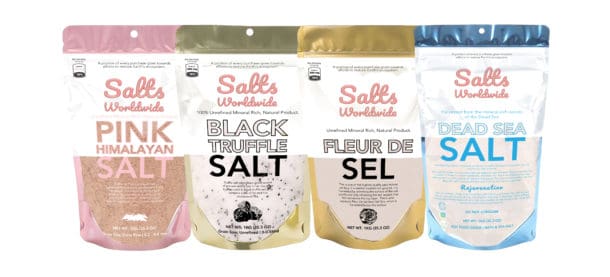Himalayan pink sea salt has many benefits to our health and well being. It contains many essential minerals and iodine that we need to be healthy. It also has a lot of purification and cleansing properties that help in cleaning our bodies. The best thing about this salt is that it is natural and free from additives and chemicals that may be harmful to our health.
Purity
There are a lot of benefits to eating pink Himalayan salt. These include detoxification, healthy skin, improved digestion, and increased energy. Pink salt can also be used as a bath additive, as it contains trace minerals. Compared to other commercial salts, it contains less sodium and other impurities.
However, not all pink salts are created equal. In fact, some are quite toxic. Therefore, it is important to do your research before you buy. The good news is that Himalayan salt is generally very pure and can be consumed in its natural form.
One study compares the mineral content of pink salt to that of white table salt. The results indicate that pink salt is more nutrient rich than white table salt.
This is a good thing, since it provides your body with essential minerals. While pink salt may not contain all the minerals necessary for health, it is certainly a lot more than iodine.
Other studies report that pink salt is a good source of calcium, iron, manganese, and magnesium. It also contains many other non-nutritive minerals. Some of these are likely to provide some benefit, but it’s still important to make sure that you’re getting your nutrients from other sources.
If you’re looking for a healthy salt, you might want to look for organic brands. Organic brands are made from salt that’s free from chemicals and other additives. You should also be wary of sea salt, because it can contain trace levels of heavy metals.
Although Himalayan pink salt is considered by some to be a better choice, it’s important to note that the quality of the salt you’re consuming can vary a great deal. Commercial salts often undergo bleaching or other processing, and that can lead to lower quality.
Mineral content
If you have ever used pink Himalayan salt in your cooking, you may have wondered about the mineral content of this product. While it contains a variety of minerals, it is not the best source of those minerals.
The salt itself is chemically similar to table salt, but there are a few differences. For instance, it contains a higher amount of sodium. This is not a good thing. It could cause the body to have an imbalance of sodium chloride.
Another difference is the color. Although the color of the salt is different, the flavor is the same.
Other studies have found that Himalayan salt contains a variety of other minerals. Some of them are present in very small amounts.
Some of the minerals found in pink salt include: iron, potassium, calcium, magnesium, zinc, sodium and chromium. These are all necessary minerals in the human body.
In addition, pink salt contains trace elements. This includes a large number of minerals that are not found in table salt.
For example, the trace of iron is responsible for the unique orange-pink color of Himalayan salt. Besides iron, there is also a trace of phosphorus. Phosphorus plays a crucial role in DNA and RNA formation.
Several other trace elements are contained in pink salt, including manganese, magnesium, and zinc. Each of these contributes to the development and health of the body.
However, the trace elements are not guaranteed to provide significant benefits. A more efficient way to boost the metabolism is by eating a diet rich in soluble fiber.
Overall, it is safe to say that pink Himalayan salt has a high concentration of the minerals listed above. However, you should avoid it if you have a mineral deficiency.
Health benefits
If you are considering adding pink Himalayan salt to your diet, there are several things to consider. One of the first things you should know is that it has the same health benefits as any other form of salt. However, it is also important to remember that it is not recommended for pregnant women. It is best to consult your doctor before making any major changes to your diet.
Another thing you should consider is that the amount of salt in your diet has a huge impact on your health. Too much sodium can lead to a number of complications. Sodium has a role in maintaining the proper balance of fluid inside your body’s cells. Excessive salt can increase blood pressure, cause your kidneys to work overtime, and retain water in your tissues.
You should not consume more than two grams of salt per day. For children four to six years old, that amount is restricted to three grams. Children seven to ten should not exceed five grams.
Adding a small amount of pink salt to your daily meals may help keep your blood pressure within normal range. However, you should not take it in place of other salts.
Pink Himalayan salt contains more minerals than regular table salt. However, these minerals have not been scientifically proven to be beneficial.
Iodine is another mineral that is found in pink Himalayan salt. It is an essential element for the thyroid gland. Without iodine, the thyroid can become dysfunctional, leading to symptoms such as fatigue, thinning hair, and constipation.
Because of its high mineral content, pink Himalayan salt can also be helpful to your skin. It can improve your complexion, exfoliate, and boost your body’s natural production of collagen.
Pollution of food and water supply
Pink Himalayan salt contains 84 trace elements in its natural mineral form. These trace elements are valuable to the body and provide a range of health benefits. However, they are not as concentrated as table salt.
While pink salt may provide positive health benefits, its excessive consumption could also lead to pollution of food and water supplies. Hence, public health officials should conduct further research to assess the risks of consuming this type of salt.
In the first study, researchers conducted a chemical analysis on pink salt samples obtained from a retail outlet in Australia. They then compared its nutrient content with similar-sized white table salt samples. The results showed that the darker-colored salt contained higher levels of minerals.
Similarly, a chemical analysis of a sample of the salt from the Pacific Ocean revealed that it contained a greater number of non-nutritive minerals than table salt. Among these are zinc, iron, manganese, magnesium, and potassium.
One sample contained more than double the recommended amount of lead. This is not an ideal situation. It is also unlikely that it would be safe to consume this amount.
However, pink salt contains a variety of other nutrients. According to the World Health Organisation (WHO), five grams of salt per day is considered to be the minimum recommended daily intake. Excessive sodium in the diet has been associated with high blood pressure and other health complications.
Nonetheless, it is not impossible to find a way to get the desired amount of salt from this type of salt. A ratio of Himalayan salt to ordinary table salt can be used to achieve this goal.
For example, if the average dietary intake of a person was 10 g of salt, the ratio of Himalayan Salt to ordinary table salt could reduce this amount to just 3 g.
Iodine content
The iodine content of Himalayan pink sea salt is very low. Iodine is a trace mineral required by the thyroid for the regulation of bodily functions. Most people get iodine from seafood, dairy products, and eggs. It is also commonly found in ocean vegetables.
It is essential for the proper functioning of the thyroid gland. A deficiency can cause complications, including thyroid complication. For this reason, it is important to get adequate amounts of iodine in your diet. In addition to table salt, iodized salt is another source of iodine.
While some studies have reported a positive iodine content in pink salt, few have evaluated its nutritional composition. This is because the salt is often marketed as being superior to table salt.
Pink salt contains a wide variety of nutrients, including trace minerals. However, it also has a high sodium content. So, it is important to use the salt in moderation.
Various types of salt are available worldwide. Sea salt has the same basic nutritional value as table salt. Salt is a natural antibacterial, and can help heal chronic conditions.
Himalayan salt contains a number of minerals, including calcium, magnesium, potassium, and copper. All are important for proper body functioning.
Non-nutritive minerals like lead are not biodegradable. They can have harmful effects on human health when consumed through food. Therefore, food regulatory bodies need to investigate the risks associated with the consumption of these substances.
To evaluate the iodine content of Himalayan salt, a study was conducted. A mass spectrometry scan in solids was used to determine the amounts of minerals in the salt. The study also determined the levels of non-nutritive minerals, which included iron oxide.



